
Tokyo is the most populous city in Japan and the capital of Japan. It is also one of the most international and cosmopolitan cities in the world. The city has a population of over 13 million people and is home to many famous tourist attractions, including Tokyo Tower, Shinjuku Gyoen, Meiji Jingu Shrine, and Ueno Zoo.
If you're looking for a bustling metropolis with endless opportunities, Tokyo is the place to be. From shopping in Ginza to exploring Akihabara, there's plenty to see and do in this ever-changing city. Here are the top 10 things to do in Tokyo:
Fushimi Inari Taisha

Fushimi Inari Taisha is one of Japan’s most famous and sacred shrines. The shrine is dedicated to the goddess Inari, and it is located in Fushimi-Inari National Park. The park is home to a number of other important shrines, including Kiyomizu-dera and Todai-ji.The Fushimi Inari Shrine was founded in 710 AD by the priestess Yoshinari. The shrine is known for its many sacred torii (gateways), which are said to have been created by the goddess herself. The shrine also features a number of other important attractions, including a moat full of fish, a temple dedicated to the god Kannon, and an ancient rice barn.The Fushimi Inari Taisha is open from 8:00am to 4:00pm every day except for New Year's Day, when it is open from 8:00am to 5:00pm. Admission to the shrine costs 600 yen for adults and 400 yen for children, and it is recommended that visitors make a reservation in advance.
How to Reach there:
From Tokyo Station, take the JR Yamanote Line to Fushimi Inari-taisha.
Ueno Park
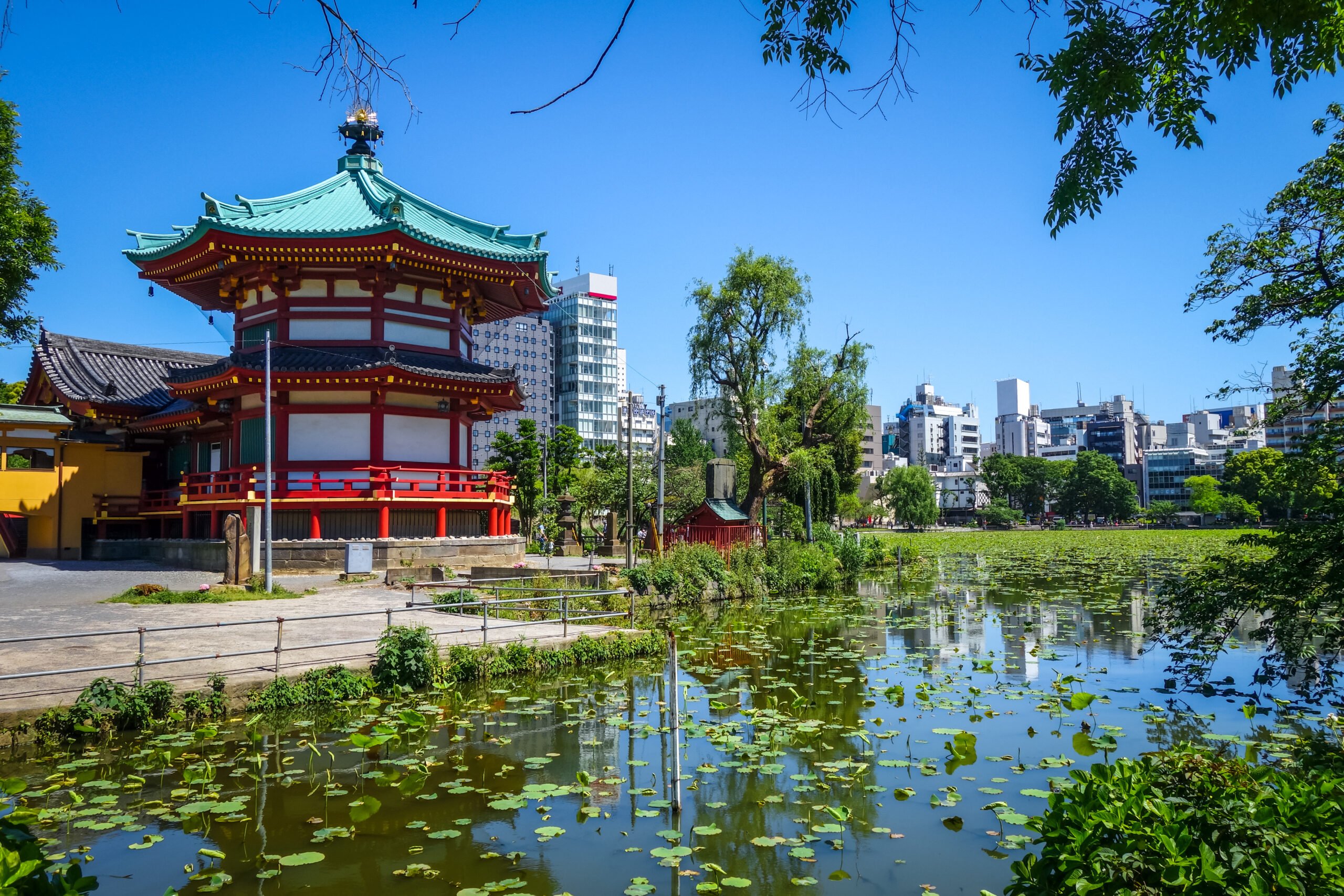
Ueno Park is one of the most popular tourist destinations in Tokyo. The park is located in the center of the city and is bounded by the Sumida River on the south, the Kasuga River on the west, and the Chiyoda River on the north. The park was first established in 1858 and has since grown to be one of Tokyo's most visited attractions.The park features a variety of attractions, including several historical sites, a zoo, several gardens, and a number of famous cherry trees. The main attraction of the park is the Ueno Zoo, which houses over 2,000 animals from all over the world. Other popular attractions include the National Museum of Japanese History, which contains a large collection of Japanese art, and Kiyosumi Garden, which features a number of beautiful gardens.
How to Reach there:
There are a few ways to get to Ueno Park. The most direct way is to take the JR Yamanote Line from Shinjuku Station. If coming from Ikebukuro Station, take the Toei Oedo Line.If coming from Haneda Airport, take the JR Tokaido Line and change at Shin-Osaka Station. Alternatively, take the Keio Inokashira Line and change at Shin-Osaka Station.From Ueno Station, there are also several bus routes that go to the park. The best way to find out which route you need is to consult the bus schedule.
Shinjuku Gyoen
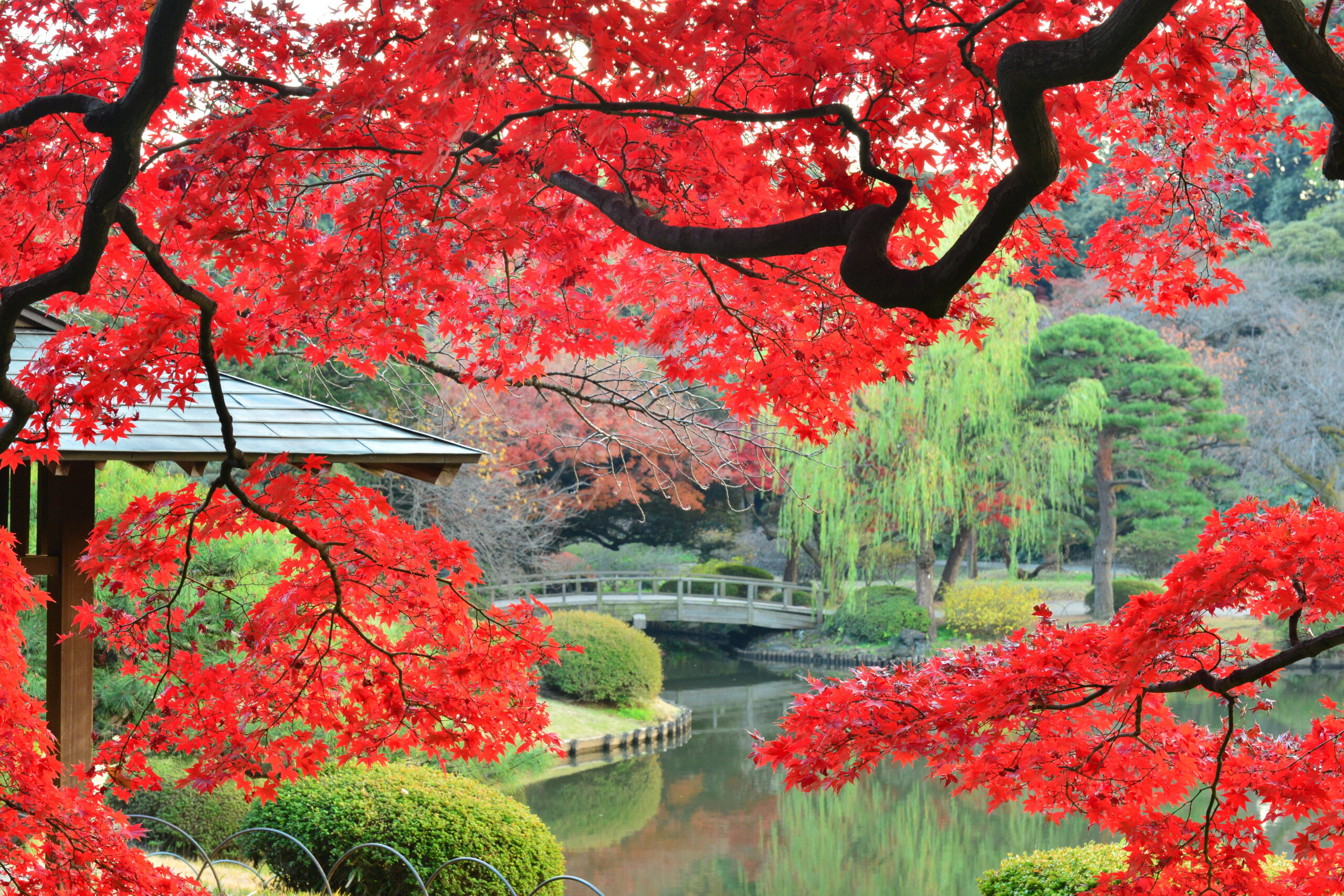
Shinjuku Gyoen (新宿御苑, Shinjuku Gyoen) is a garden located in Shinjuku, Tokyo. It has an area of 236,000 square meters and is the second largest public garden in Japan after the Kiyosumi Garden. It was founded in 1872 by Hirobumi Ito and opened to the public in 1875. The garden is made up of five sections: the Main Garden, the East Garden, the West Garden, the South Garden, and the North Garden. There are more than 1,000 trees and plants in the garden. The Main Garden has a pond with koi and a pagoda. The East Garden has a Chinese pagoda and a Japanese shrine. The West Garden has a rose garden with over 2,000 rose bushes. The South Garden has a European style arboretum with more than 1,000 trees and plants from different parts of Europe. The North Garden has a Japanese style landscape with ponds and streams.
How to Reach there:
Shinjuku Gyoen is one of the most popular tourist destinations in Tokyo and can be reached by either train or bus. The JR Yamanote line leads directly to Shinjuku station, while the Toei Asakusa line can be accessed from either Ueno or Ikebukuro stations. Alternatively, buses operated by the Tokyu Corporation can be taken to various points around Shinjuku including the Gyoen. Visitors can also take a taxi from the station or use one of the numerous bus services that stop near the park.
Asakusa Kannon Temple
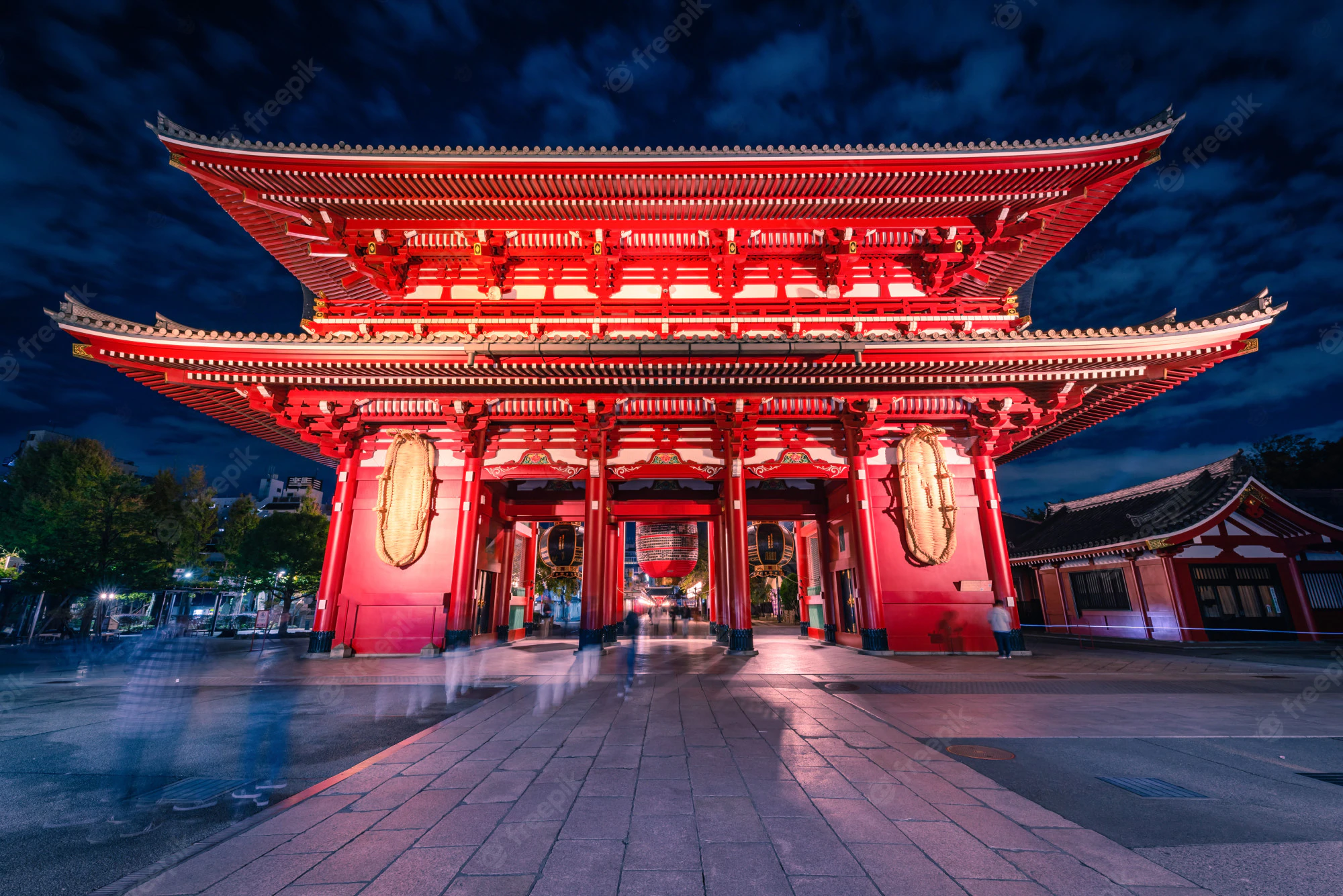
The Asakusa Kannon Temple is a Buddhist temple dedicated to the goddess Kannon, located in the Asakusa district of Tokyo, Japan. The temple is one of the most popular tourist destinations in Tokyo and is renowned for its large number of visitors, as well as its many impressive structures and gardens. The temple's main complex houses a large number of beautiful buildings and gardens, including a five-story pagoda, which is said to be the world's largest wooden structure constructed without using nails or screws. The temple also features an immense 500-foot-long (150 m) statue of the goddess Kannon, which stands atop a 100-foot-tall (30 m) pedestal.
How to Reach there:
There are several methods you can use to reach Asakusa Kannon Temple. The most popular way is to take the train and get off at Asakusa station. From there, it's a short walk to the temple. You can also take the subway and get off at Asakusa station. From there, it's a short walk to the temple. Or, if you're feeling energetic, you can take the bus and get off at Asakusa Bus Terminal. From there, it's a short walk to the temple. If you're driving, there are several options for getting to Asakusa Kannon Temple. You can take the Tokyo Highway and get off at Asakusa interchange. From there, it's about a 10-minute walk to the temple. You can also take the Meguro Expressway and get off at Meguro interchange. From there, it's about a 10-minute walk to the temple.
Meiji Jingu Shrine
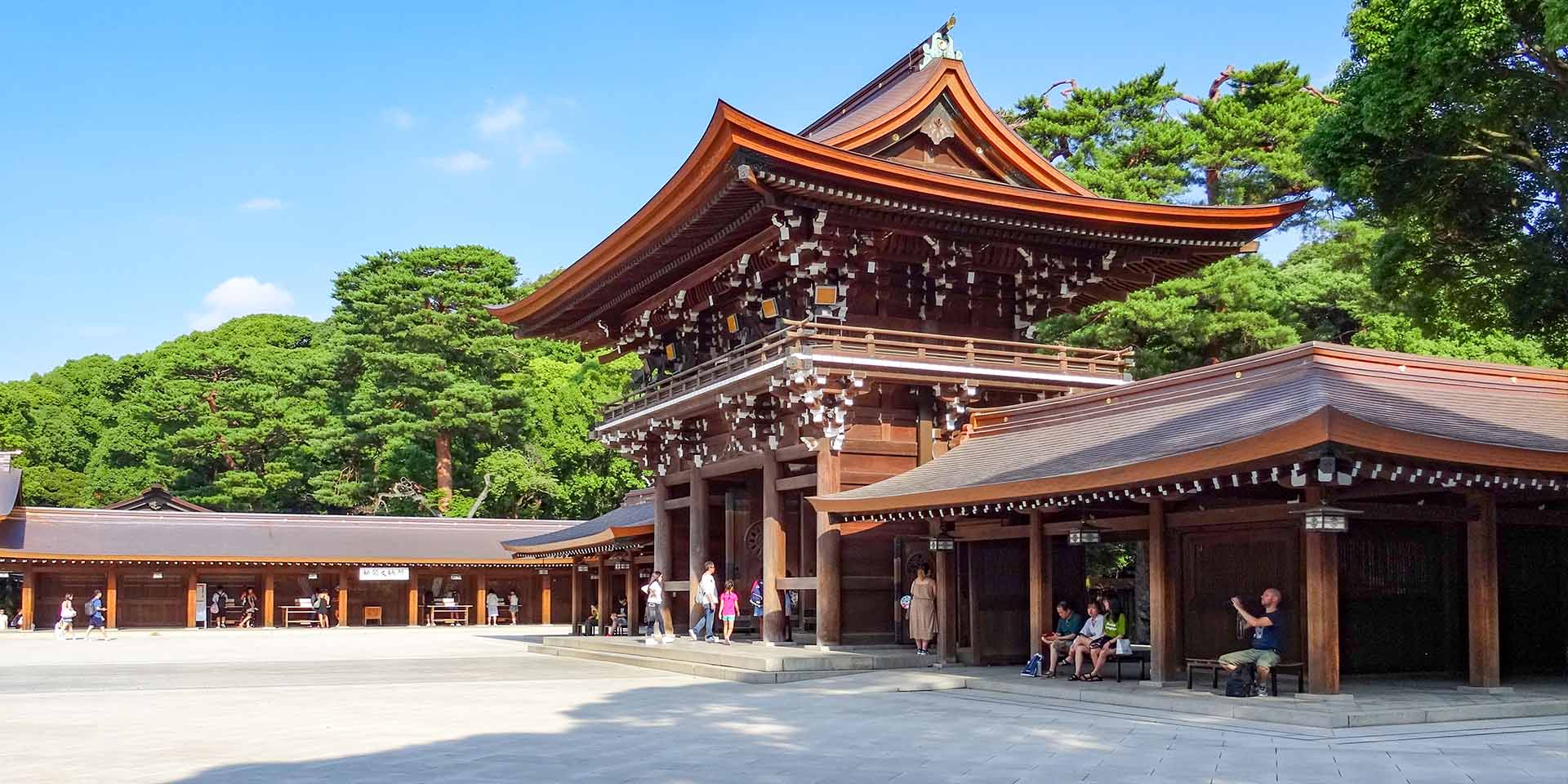
Meiji Jingu Shrine, also known as the Shinto Shrine of the Emperor, is a national shrine in Nikko, Japan, dedicated to the deified spirits of Emperor Meiji and his consort Empress Shōken. The shrine is one of the most popular tourist destinations in Japan and is famed for its beautiful gardens and serene atmosphere. The shrine complex covers an area of over 37 hectares and includes a number of buildings, including the main Shinto temple, a pagoda, and a monastic complex. The shrine's official name in Japanese is “Tsukuba Jingu” (meaning “Lake Biwa Shrine near Tsukuba”). The Meiji Emperor was enshrined at the new Meiji Jingu Shrine on December 12, 1912. In 1943, during World War II, the Imperial Family were evacuated from Tokyo to nearby Fukuoka and then to Ishibashi on Honshu. The Imperial Household Agency subsequently moved all of the emperor's possessions from Tokyo to Ishibashi so that they would be safe from air raids. In 1945, after Japan's defeat in World War II and subsequent surrender, these possessions were returned to Tokyo and placed at Meiji Jingu Shrine. Today, Meiji Jingu is one of Japan's most popular tourist destinations. It is open to the public from 7:00am to 7:00pm daily except December 25th and January 1st. Admission is free for all visitors.
How to Reach there:
If you are heading to Meiji Jingu Shrine in Tokyo, be sure to take the JR Yamanote Line to Shibuya Station. The shrine is located a short walk from the station. Visitors can take many different routes to get there, but the most popular is probably to follow the road that circles the shrine. Another popular option is to take the Tokyo Metro Ginza Line to Shibuya Station, and then follow the signs for Meiji Jingu Shrine. If you are driving, be sure to take the Mita Expressway to Otemachi or Shibuya Stations and exit at Shibuya-Koen. Parking can be a bit of a challenge in central Tokyo, but there are usually some spots available nearby.
Tokyo Skytree

Tokyo Skytree, officially known as the Tokyo Tower, is a 1,068.3 m (3,593 ft) tower in Tokyo, Japan. It was completed in May 2011 and has become one of the most popular tourist destinations in Tokyo with over two million visitors each year. The tower is the tallest structure in Japan and the 108th-tallest building in the world. The tower is also the fifth-highest freestanding structure in the world and has a observation deck that offers a 360 degree view of Tokyo.
How to Reach there:
To reach Tokyo Skytree, visitors can take the Shinkansen to Shinjuku Station. From Shinjuku Station, they can take the JR East EAST Line to Ueno Station. From Ueno Station, they can take the Tokyo Metro Yurakucho Line to Odaiba-Kashiwa Station. From Odaiba-Kashiwa Station, they can take the TOKYO SKYTREE HIKING CLUB bus to the terminus of the bus at the observation deck.
Akihabara
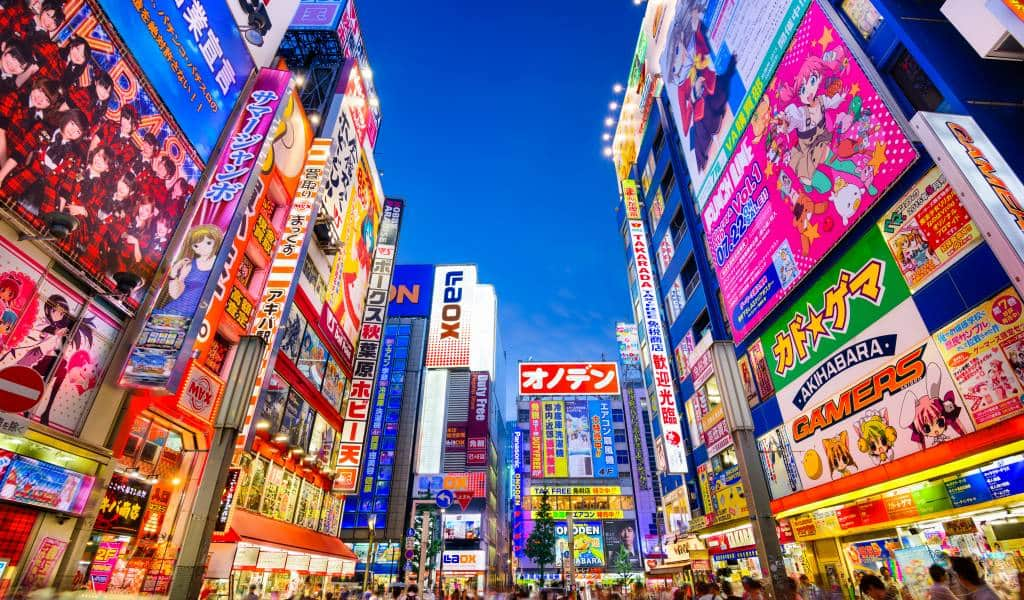
If you're in Tokyo, there's no escaping Akihabara. This electronics mecca is a must-see for anyone interested in geeky gadgets and computer components. If you're not familiar with the area, here are some tips on how to get around: Akihabara is easy to navigate on foot, but if you want to see everything (there are lots of small shops), try using the JR Yamanote line as your base. From there, take the Line A (green) exit and head east. You'll come to a large intersection where you can turn left or right. Take the right fork and head down the main street until you see the “Akihabara” sign. From there, it's a bit of a walk (about 15 minutes) to the center of the shopping district. There are also several underground stations near Akihabara that make for an easy way to get around if you don't have time to explore on foot. Just take the nearest exit and follow the signs.
How to Reach There:
Akihabara is best reached by train from Tokyo. The JR East Shinjuku station is on the east side of the city, about a 10-minute walk from the heart of Akihabara. There are several JR East lines that go through Akihabara; the easiest way to get around is to buy a JR East Rail Pass. If you don't have a Rail Pass, there are also buses and taxis available.If you're coming by plane, Narita Airport is about an hour away by car, and there are frequent flights into Tokyo's Haneda Airport.
Tokyo National Museum

Tokyo National Museum is a vast and sprawling museum located in the Shinjuku district of Tokyo, Japan. The museum houses a wide variety of artifacts from all over the world, including art from ancient Egypt, Greece, China, Japan, and Korea. The museum is also home to one of the world's largest collections of samurai swords. If you're looking for something to do in Tokyo while you're in town, be sure to check out the Tokyo National Museum!
How to reach there:
Tokyo National Museum is located in Ueno Park in Tokyo. The nearest subway stations are Ueno and Akihabara. The museum is open from 9:00 a.m. to 5:00 p.m., Monday through Saturday, and closed on Sundays and national holidays. Admission costs ¥500 for adults, ¥300 for students, and children under 12 years of age are free.
If you're looking for an exciting city to visit, Tokyo is the place to be. This metropolitan area is home to some of Japan's most popular tourist destinations, including Harajuku, Shinjuku, and Shibuya. You'll also want to check out Akihabara and Ueno, two of Tokyo's oldest districts.
When it comes to accommodation in Tokyo, there are a number of options available. The city is well-connected by train, so you can easily find accommodations in central Tokyo or elsewhere in the metropolitan area. Additionally, many hotels offer discounts during peak tourist seasons.
Stay In Tokyo
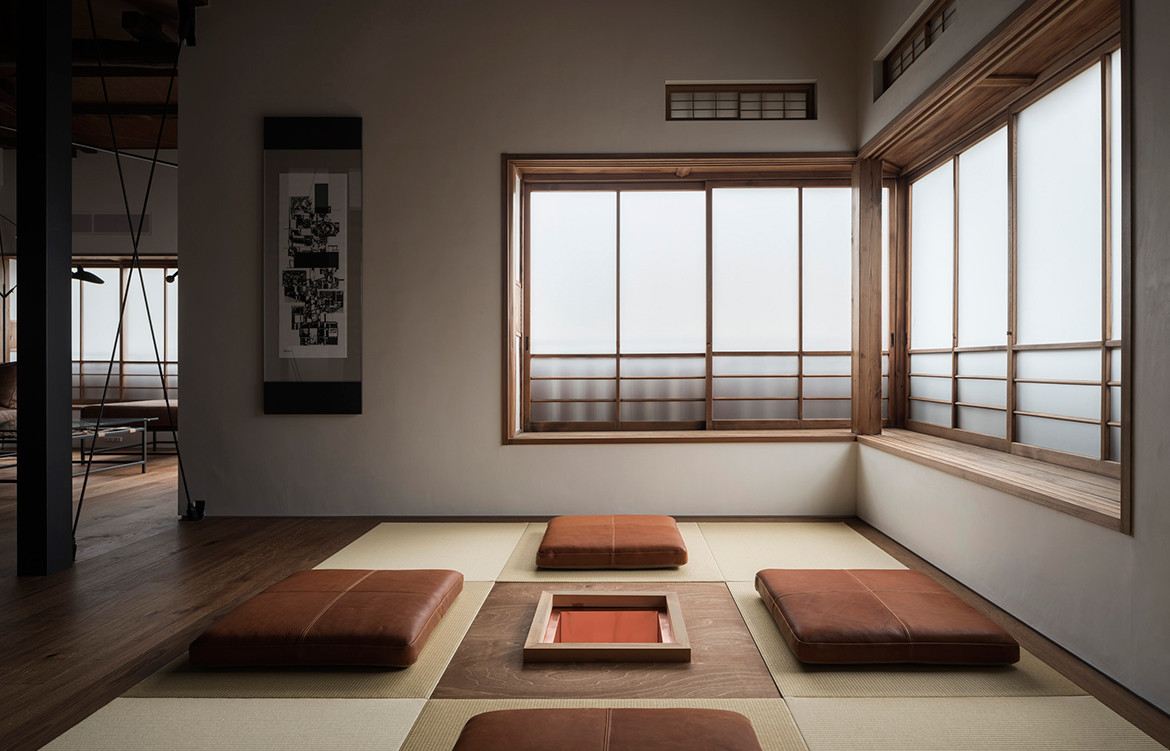
Whatever your budget may be, you're sure to find a great place to stay in Tokyo. Here are a few specific recommendations:
1) Ryokan Momofuku Ando: This traditional Japanese inn has been operating since the 1920s and offers guests spacious rooms with views of the surrounding gardens or river. It's located in Ueno District and offers free access to its on-site spa and fitness center.
2) Grand Hyatt Tokyu: Offering panoramic views of Shinjuku and the Tokyo Tower from its 34th floor lobby, this luxury hotel is perfect for business travelers or tourists seeking a high-end experience. It's also located within walking distance of several top attractions in downtown Tokyo.
3) InterContinentalTokyo Shibuya: With an on-site fitness center and pool as well as sleek contemporary architecture, this hotel is perfect for those looking for a modern and luxurious stay in Tokyo. It's also located in one of Tokyo's most popular neighborhoods, Shibuya.
Whatever your budget or travel goals, there's a great place to stay in Tokyo waiting for you. Just make sure to book your accommodation ahead of time to get the best discounts and avoid any last-minute surprises.






